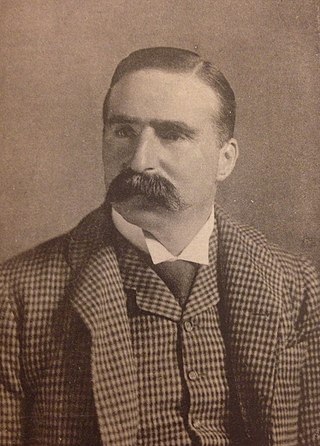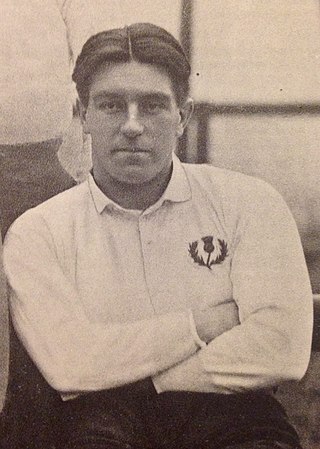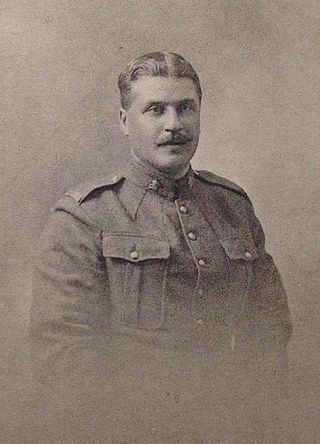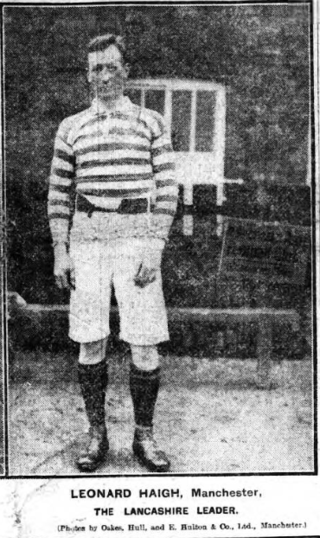
Watsonian Football Club is a rugby union club based in Edinburgh and part of the Scottish Rugby Union. The club is connected with George Watson's College as a club for former pupils, and changed its policy in the 1980s to be a fully open club, welcoming players of all abilities regardless of whether they attended the school or not. It is one of a small number of rugby union clubs entitled to call itself a 'football club', rather than a 'rugby football club'. Watsonians run a number of sides; the top male side plays in the FOSROC Super Series tournament, the Women's side plays in the Tennents Scottish Women's Premiership Scottish Rugby's Women's League

Ronald 'Ronnie' William Poulton was an English rugby union footballer, who captained England. He was killed in the First World War during the Second Battle of Ypres.
The 1906 Home Nations Championship was the twenty-fourth series of the rugby union Home Nations Championship. Six matches were played between 13 January and 17 March. It was contested by England, Ireland, Scotland and Wales.

John Lewis Williams was a Welsh international wing who played club rugby for Cardiff Rugby Football Club. A three times Triple Crown winner, out of seventeen appearances for Wales he was on the losing side only twice.

William Purdon Geen was a rugby union wing and centre, who represented Wales, and played club rugby for Oxford University and Newport and county rugby for Monmouthshire. He was also invited to play for the Barbarians on several occasions. Geen unsuccessfully trialled for England in 1910, but was selected and played for Wales on three occasions in the 1912–1913 season. Injury prevented him from playing more internationals, and his service in the First World War put an end to his career.

George Hayward was a Welsh international rugby union forward who played club rugby for Swansea, and was capped for Wales on five occasions and was part of the 1908 Home Nations Championship winning team.

Louis Augustus Phillips was a Welsh rugby player, who played half-back for Newport RFC, and won four caps for Wales. He was also a talented amateur golfer.

Colonel Richard Davies Garnons Williams was a British Army officer and Welsh rugby union player who represented Wales, Brecon and Newport. He played in the first Wales international rugby union match in 1881.

Lieutenant-Commander John Skinner Wilson was a Trinidad-born rugby player, who represented Scotland, United Services RFC and London Scottish FC. He enrolled in the Royal Navy in 1898. He was killed in World War I in the Battle of Jutland, serving as Lieutenant-Commander aboard HMS Indefatigable. He is remembered on panel 10 at the Plymouth Naval Memorial.
Rowland Fraser was a rugby union player, who played as a forward for Scotland, and also for Cambridge University RFC.

Walter Michael "Mike" Dickson was a rugby union player, who represented Scotland, Blackheath and Oxford. He was killed in World War I.

William "Willie" Middleton Wallace was a rugby union player. He played fullback for Cambridge University RFC and was capped for Scotland in 1913–14.

Pte. Andrew Ross was a Scottish rugby union player from Edinburgh. He worked in the Merchant Navy as a marine engineer. He played for Royal High School FP and was capped several times for Scotland between 1905 and 1909.

Pierre Guillemin was a French rugby union player, who represented France, Paris and Racing Club de France (RCF).

Arthur "Mud" James Dingle was a rugby union centre and wing, who won three caps for England, and played for County Durham, Hartlepool Rovers and Oxford University.

Leonard Haigh was an English rugby player. He won seven caps for England between 1910 and 1911, and also represented Manchester and Lancashire.
Vincent McNamara was a rugby union player who represented Ireland. He died at Suvla Bay, Gallipoli, Ottoman Turkey, during World War I.

Major Robertson "Robbie" Stewart Smyth was an international rugby player, who represented Ireland and Great Britain. Born in County Down, Ireland, he went to Dungannon Royal School, then studied medicine at Trinity College, Dublin, where he obtained his doctorate in 1904. After a year as house surgeon at Sir Patrick Dun's Hospital, he was commissioned into the Royal Army Medical Corps in 1906, and went to India the following year.
Charles Stuart Nimmo was a Scottish international rugby union player.


















